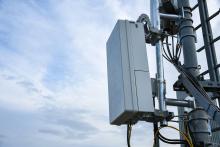These platforms fall into two broad categories: smartphones, which have full-blown operating systems and can run applications; and wireless PDAs, integrated with Wi-Fi, cellular or both.
With some 10 million smartphones in use, market researchers are bullish about the industry's growth prospects. IDC says wireless platforms will grow 86 percent per year through 2007, and ABI Research says 150 million units will be sold in 2008 alone. A number of developments are fueling this expansion. First, these platforms are ideal clients for recently deployed wireless networks around the world, including high-speed GSM/ WCDMA and CDMA2000 cellular data networks. The fit is ideal because, unlike laptops, where users must make do with wireless hotspots that are few and far between in many areas, an always-on wireless device can take advantage of the constant connectivity of cellular networks.
Moreover, smaller devices, with their compact displays, don't place as high a demand on bandwidth--for now. As WLANs continue their rapid-fire spread throughout organizations and into public areas, we expect many wireless platforms to work over Wi-Fi, especially as VoIP (voice-over-IP) technology matures. Wi-Fi PDAs are already common, and vendors have announced smartphones with Wi-Fi capabilities.
To help you choose the best device for your enterprise, we submitted detailed questionnaires to the leading vendors in this market--Microsoft, PalmSource, Research In Motion (RIM) and Symbian--asking about everything from development environments to security. Our analysis of their responses begins here. We also sent a poll to 15,000 NETWORK COMPUTING readers; 478 of you responded with valuable insights into how these platforms are being adopted and what enterprises are demanding from them.
Our reader poll results underscore wireless' market potential. Three quarters of respondents have wireless trials, or partial or widespread deployments, under way; 39 percent have some devices and applications deployed in their organizations. Almost half of respondents say they will adopt wireless platforms within 12 months. Interestingly, only 12 percent plan to deploy devices to most employees--nearly half will outfit fewer than 20 percent of workers--and 86 percent view the platforms as addressing productivity gains for specific subsets of workers. This suggests that most enterprises see wireless platforms addressing specialized needs. Thus, though the potential for mass-market adoption exists, it may not materialize as soon as some in the industry would like. With relatively flat IT budgets, few organizations have the wherewithal to fully analyze this quickly evolving technology area. Yet those that do will realize significant benefits, while plodders at best will have major support headaches and at worst will expose their organizations to significant security gaps as these networked devices proliferate anyway (for ways to combat wireless insecurity, see "Building Secure Enterprise WLANs," and "Examining 802.11i and WPA,"). Although PCs were first used only for a few tasks, their usefulness spawned a multitude of applications. We see an analogous trend for small wireless platforms.








